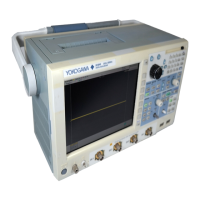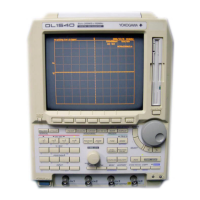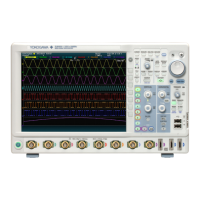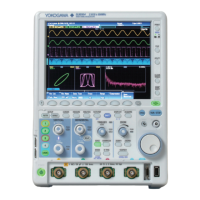App-25
IM 701450-01E
App
Appendix
Coherence Function
This expresses the ratio of the output power generated with the input signal to the
transfer system and the total output power.
Coherence function = Gyx×Gyx*/(Gxx×Gyy)
Item Equation Computation
Amplitude CH-MAG (Ryx
2
+Iyx
2
)/(Gxx×Gyy)
If the output signal is due entirely to the input signal, the coherence function becomes 1.
As the ratio decreases, it falls below 1. Thus, the coherence function always takes on a
value between 0 and 1.
Note
On one data acquisition, the coherence function becomes 1 across all frequencies. Also,
make sure to take the frequency average of the computation.
Time Windows
You can select rectangular, Hanning, or flattop for the time window. The rectangular
window is best suited to transient signals, such as impulse waves, which attenuate
completely within the time window. The Hanning and flattop windows allow continuity of
the signal by gradually attenuating the parts of the signal located near the ends of the
time window down to the 0 level. Hence, it is best suited to continuous signals. With the
Hanning window, the frequency resolution is relatively high as compared with the flattop
window. However, the flattop window has a higher level of accuracy. When the
waveform being analyzed is a continuous signal, consider the above characteristics in
selecting the proper window to be applied.
T
T
T
T
t
Sine wave
Window Integral Power spectrum
Rectangular
window
Hanning window
Rectangular window
Hanning window
Flattop window
: W(t)=u(t)–u(t–T) U(t) : Step function
: W(t)=0.5–0.5cos(2π )
: W(t)={0.54–0.46 cos(2π )}
T
T
Flattop window
t
T
t
T
sin{2π(1–2t/T)}
2π(1–2t/T)
Notes When Executing the FFT Computation
Normally, computation is performed on the sampled data stored in the acquisition
memory. However, for waveforms that have been acquired in envelope mode,
computation is performed on the maximum/minimum values per acquisition interval.
Appendix 4 User-Defined Computation
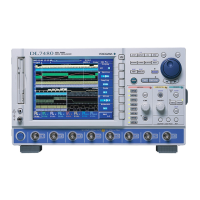
